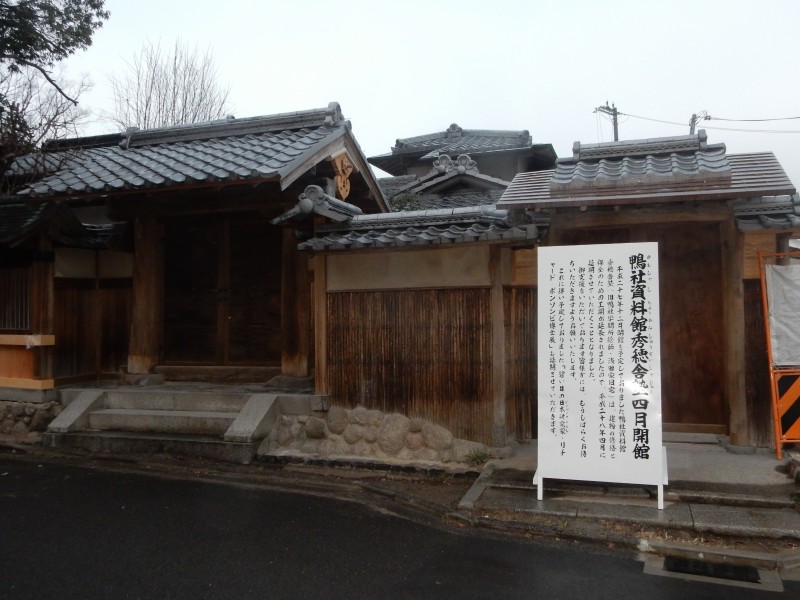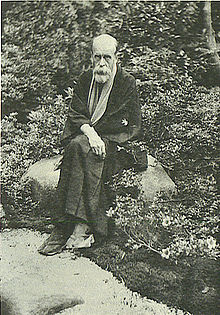
Asadake House where the Ponsonby-Fane exhibition will be held in April
Richard Ponsonby-Fane is acknowledged as perhaps the greatest Shinto scholar of the twentieth century – and that includes Japanese scholars. He wrote 11 weighty tomes in all about such subjects as The Imperial Family of Japan, The Vicissitudes of Shinto, Studies in Shinto and Shrines, et al. It’s an extraordinary feat for an aristocratic Englishman who had no need to push himself. He did it as a passion, a pursuit, a principle. It derived from his belief in a divinely appointed king. Intellectually he belonged in the seventeenth century when Charles I was guided by the Divine Right of Kings.

In the prewar years Shinto scholar Richard Ponsonby-Fane was much taken with the Kamigamo area of Kyoto and lived in the former ‘shake machi’ there
In Japan he had found a country where they took their sovereign seriously. He may have had personal reasons for living abroad (homosexuality), but he overcame that by plunging into his work. The result was honours and friendship on high – in later years he insisted on wearing a scarf made for him by Empress Teimei.
According to a report in the Kyoto Shimbun, it is believed that Ponsonby-Fane’s legacy is in danger of being forgotten, which is why there will be an exhibition of his papers in April at Shimogamo Jinja. It will take place in the Former Asadake House, which was part of the ‘shake machi‘ (Shrine town) around shrines in times past. Ponsonby-Fane lived in the shake machi of Kamigamo Jinja in north Kyoto, and the area retains something of its former character.
Altogether there were 340 houses in the Shimogamo shake machi in the past, all connected in some way with the shrine – priests, attendants, miko, craftsmen, groundsmen, cooks, ritualists, history experts, etc etc. In Meiji times the system was abolished; now only two of the houses remain, one of which is the Asadake House.
The House was empty for ten years – once it belonged to the mayor. The previous owner offered it to the shrine, who had it renovated and remodelled into an exhibition room. The very first exhibition was held last autumn and featured Ponsonby-Fane’s material and his contribution to shrine history.
Now the Asadake House is a study centre for children who cannot learn of history at school because of the postwar constitution. For example, in the past kami and buddhas were one, says the newspaper, but children have no place to learn about such things. One can’t help wondering what Ponsonby-Fane would have thought of that! Remarkably, some eighty years after his death the eccentric Englishman continues to play a vital part in disseminating information about Shinto.
************************
For more about Ponsonby-Fane, see here.

The house where Ponsonby Fane once lived, now taken over by a company

Wow, what an inspiration!